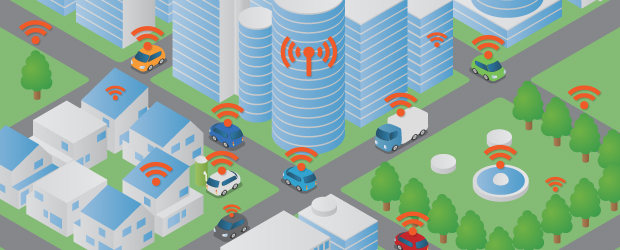

.jpg)
Yogi Schulz
Published: December 1st, 2015
The Internet of Things (IoT) may not enjoy the pop culture following of the HBO romantic sitcom television series Sex in the City, but IoT will improve the lives of us city dwellers more dramatically than the television series. Here’s how:
Energy management in buildings
Today, the inefficient use of energy in our cities is embarrassing. Our buildings waste significant amounts of energy. Using IoT sensors to reduce this waste reduces operating cost and controls greenhouse gases significantly.
In office buildings and in homes, smarter IoT temperature sensors can keep the interior temperature uniform even as exterior temperature, amount of sunlight and occupancy varies during the day and from season to season. IoT motion sensors can turn off the lights and lower the temperature when no one is in the space.
More futuristically, I envision IoT sensors will be combined with more local solar energy collection, waste heat capture and controllable blinds to improve our experience while further reducing cost and greenhouse gases.
Energy management in transportation
Today, inefficient transportation wastes significant amounts of energy. Using IoT sensors to reduce this waste reduces cost, improve service and control greenhouse gases significantly.
Smarter IoT speed sensors that are traffic aware can turn off cars sitting on freeways and in parking lots. Smarter IoT load sensors can turn cylinders on or off as needed for cars, trucks and buses. This capability can counteract our insistence on buying cars with way more horsepower than we need.
More futuristically, I envision IoT transportation demand sensors will be combined with knowledge of vehicle positions to make informal carpooling feasible, improve bus loading and grow the use of formal ride-sharing and taxis.
Traffic management
Many cities are already using IoT sensors at intersections and on highway signs to vary traffic signal timing in response to traffic demand and to inform drivers of accidents and road closures through their on-board navigation systems. These IoT capabilities reduce energy consumption and greenhouse gases.
We can expect this IoT application to expand to more highways and to more cities as the cost to acquire and operate traffic management systems continues to decrease.
More futuristically, I envision traffic management systems will provide data to self-driving cars to adjust route choices where feasible or suggest a later start time where choice is not available.
Water management
Currently we only become aware of our water consumption long after the fact with no ability to manage that consumption better. How many water sprinklers blithely perform their work during a rainfall?
With IoT moisture sensors such nonsense can stop. With smarter IoT water meters, consumption data can be provided to businesses and home owners in near-real time to reduce consumption.
More futuristically, more sophisticated IoT moisture sensors, will vary the volume of water appropriately in homes and at city parks. During periods of drought, the water volume will be deliberately reduced or staggered centrally to minimize peaks.
Street lighting
Street lights have used sensors to detect nightfall and daybreak to turn the lights on and off, long before IoT became fashionable, to reduce energy consumption.
In the future, street lights will become smarter to sense pedestrians and vehicles to further brighten and dim lights as needed. These IoT sensors will also wakeup video surveillance cameras to enhance security.
Parking management
Some cities have installed IoT sensors in parking stalls to alert drivers where elusive parking stalls are available. This IoT-based system reduces gasoline consumption looking for a parking stall.
In the future, I’m hoping this IoT application will provide a way for monthly parkers to let the system know when they won’t be using the parking spot and make it available to someone else.
Snow removal
In northern climates like Canada, some cities now use IoT sensors to ensure GPS-equipped snow plows and truck are deployed where needed and to alert drivers when key roads have been cleared after a snow storm. These capabilities reduce cost and improve road safety.
In the future it will be interesting to see if the cost of these systems decreases sufficiently so that they can be extended to bicycle paths and sidewalks.
Can you share more ideas for how IoT applications can deliver benefits for our cities?
Read more: http://www.itworldcanada.com/blog/iot-in-the-city/378856#ixzz3thPGlLeP
or visit http://www.itworldcanada.com for more Canadian IT News



